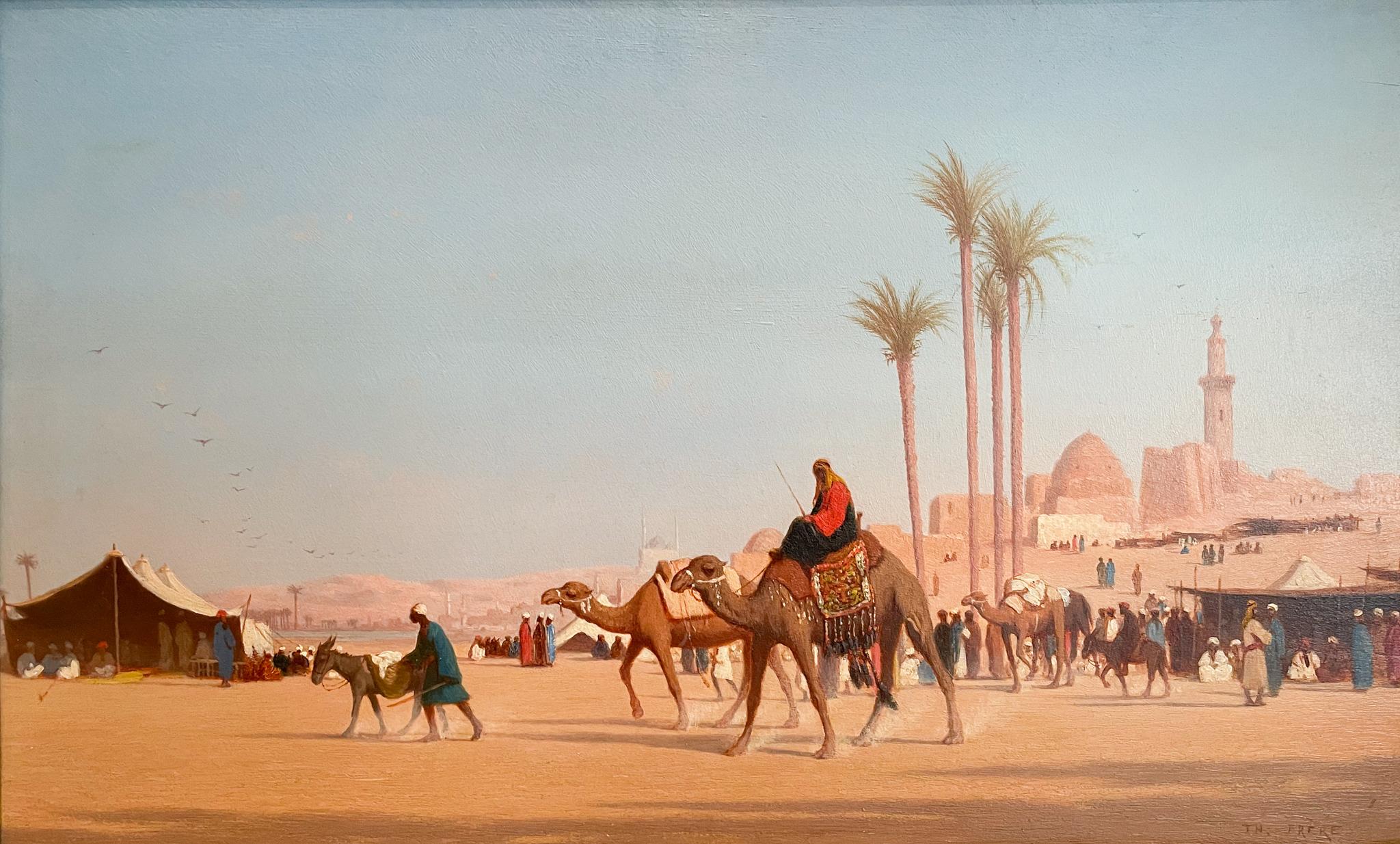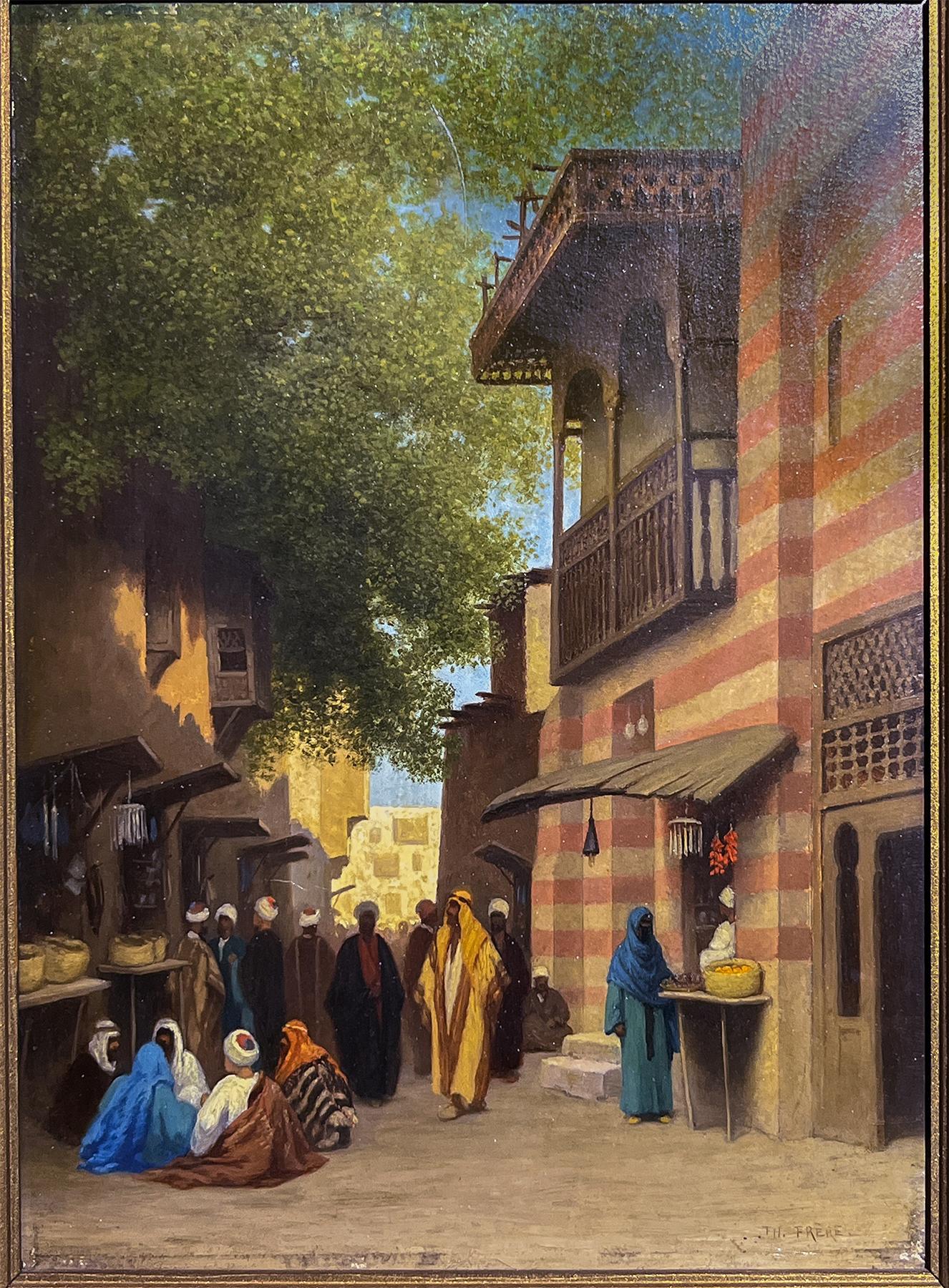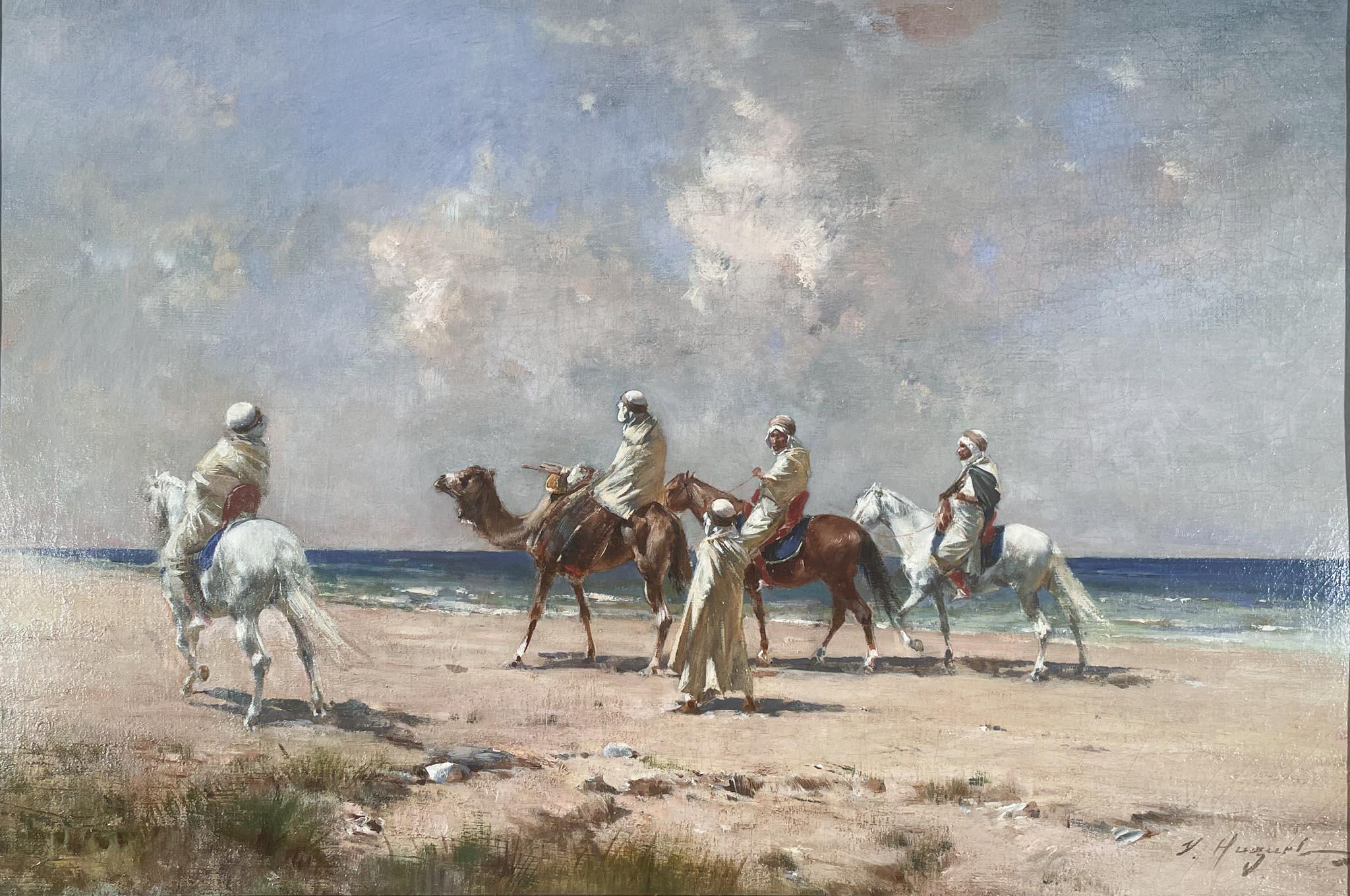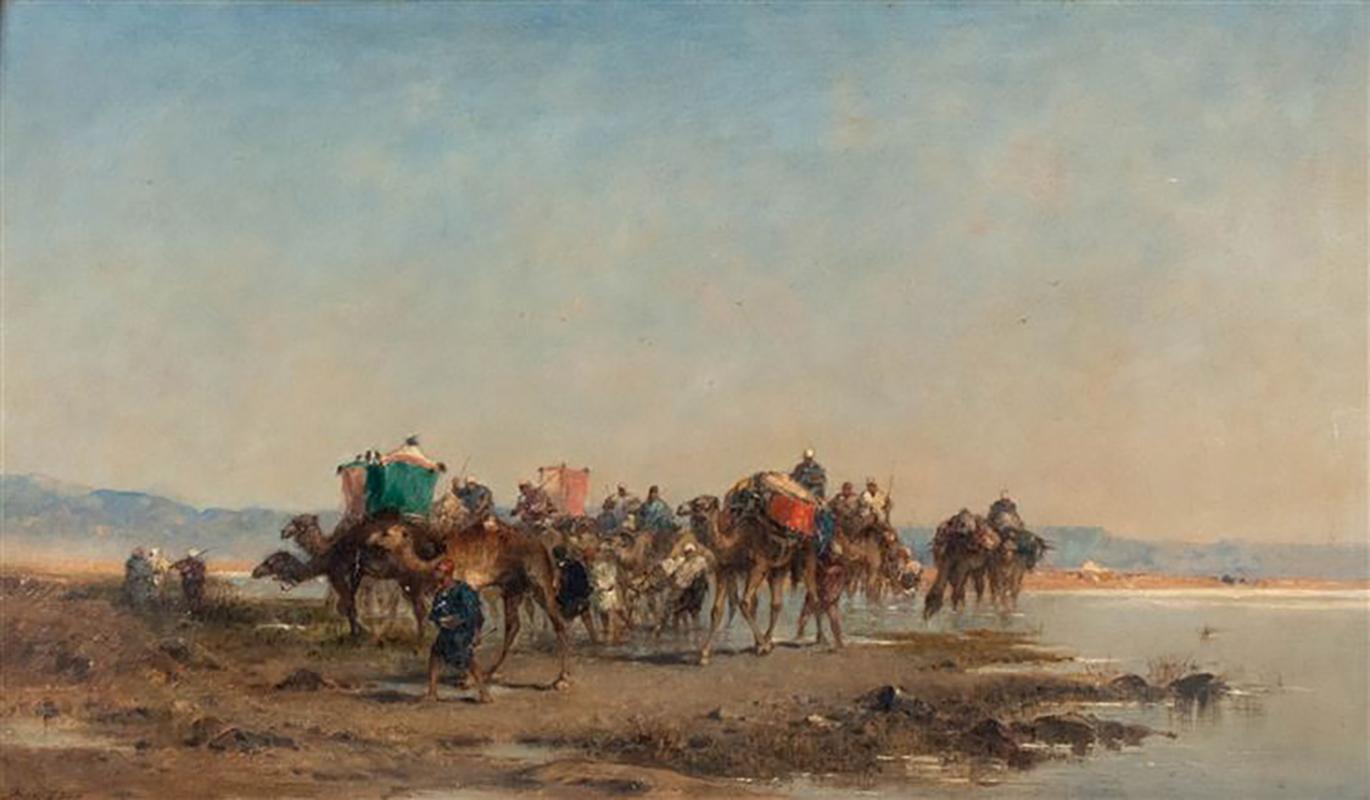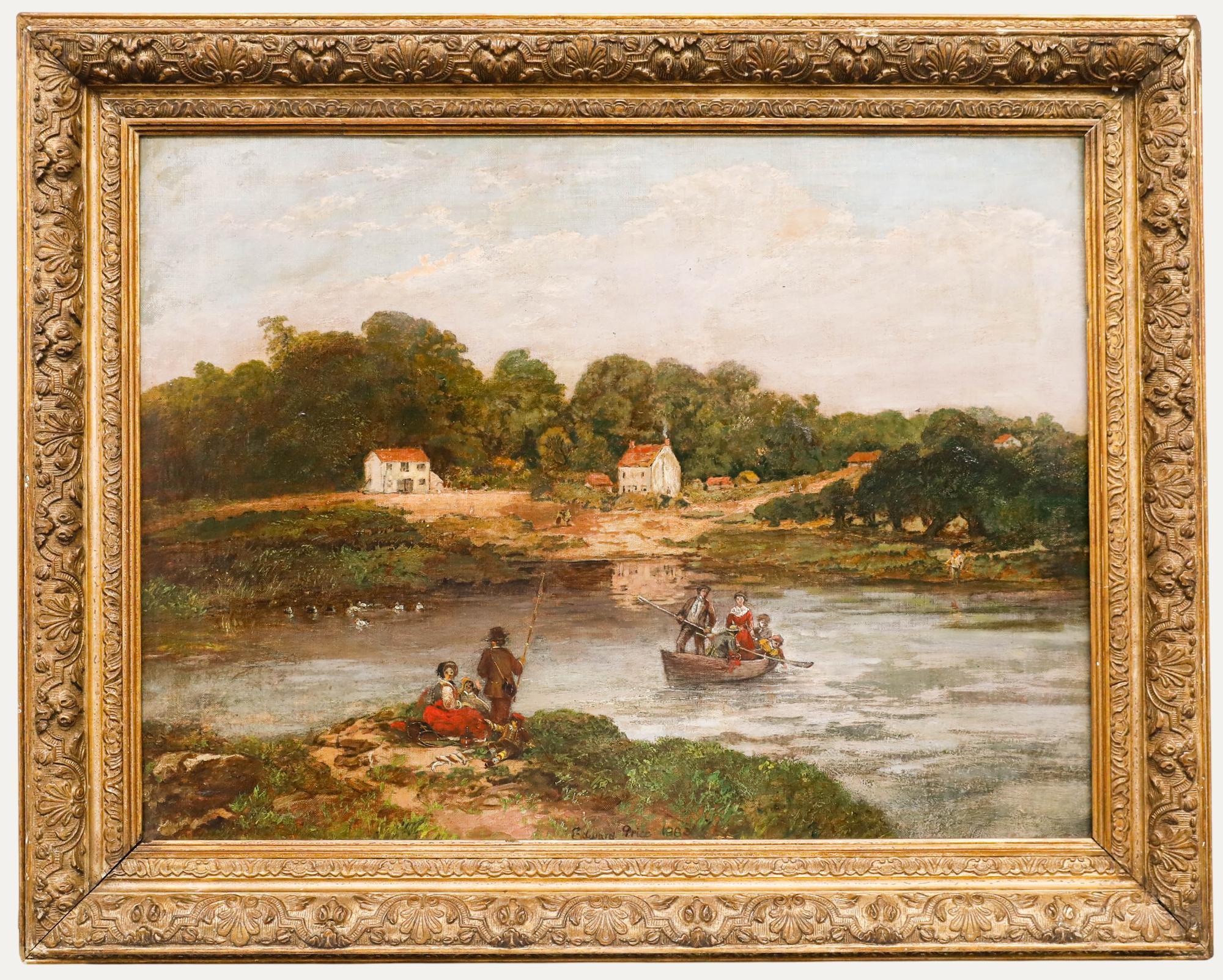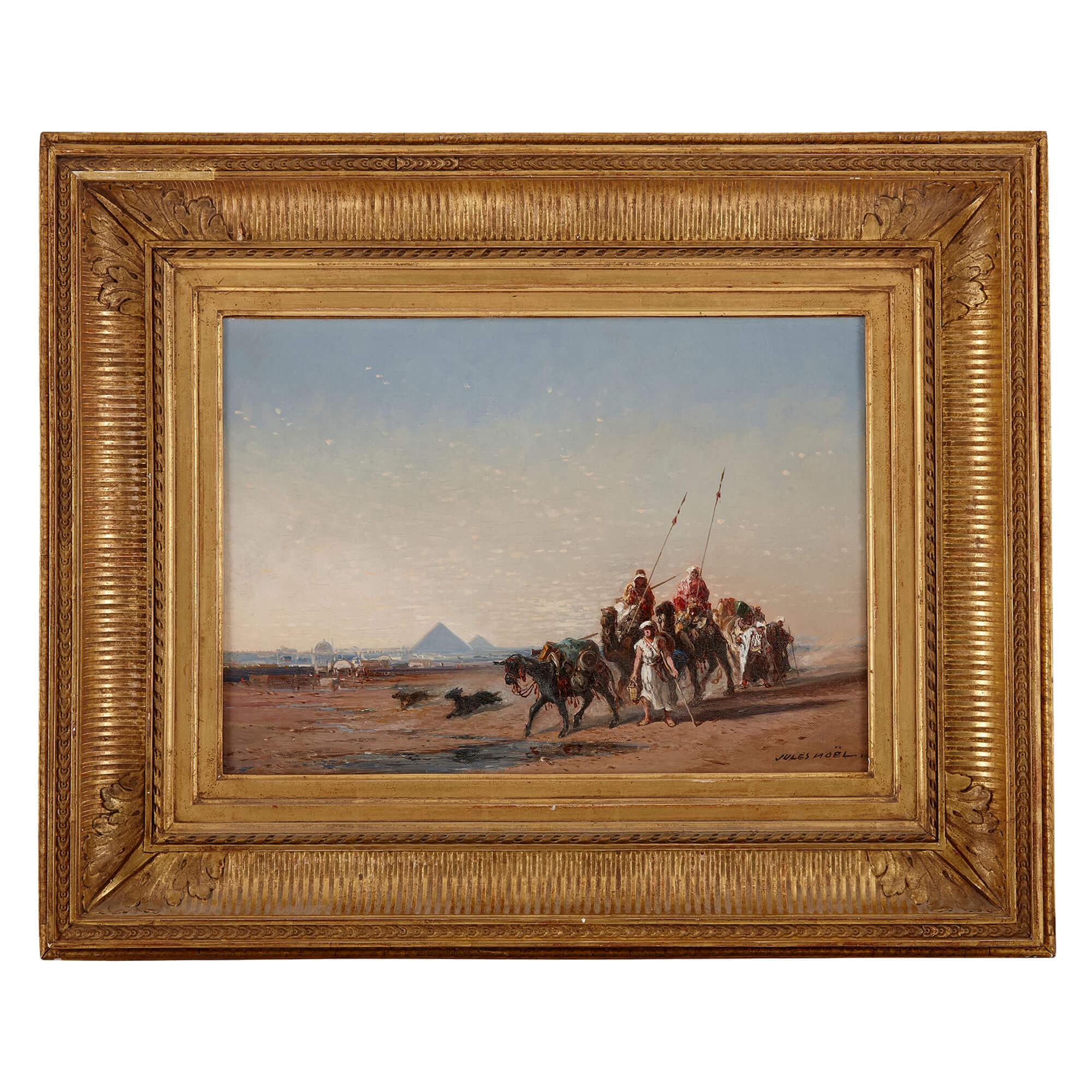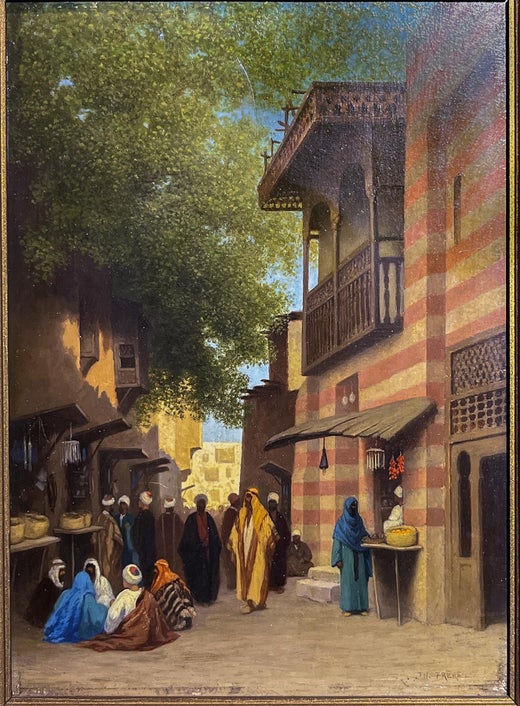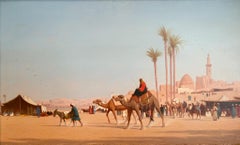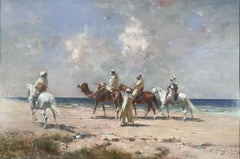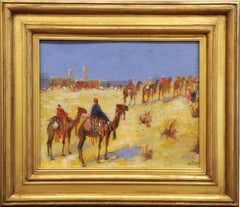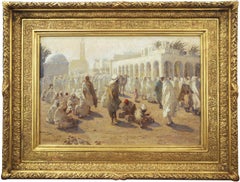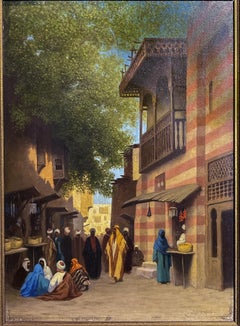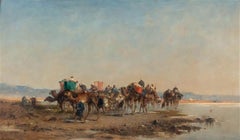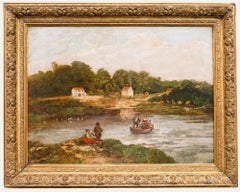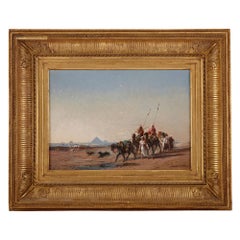Items Similar to The Crossing
Want more images or videos?
Request additional images or videos from the seller
1 of 6
Charles Théodore FrèreThe Crossing1855
1855
Price Upon Request
Price Upon Request
Price Upon Request
Price Upon Request
Price Upon Request
Price Upon Request
Price Upon Request
Price Upon Request
Price Upon Request
Price Upon Request
About the Item
The Crossing, 1855, by Theodore Frere (1814-1888)
Oil on wood panel
9 x 14 inches unframed (22.86 x 35.56 cm)
17 ¾ x 22 ½ inches framed (45.085 x 57.15 cm)
Signed and dated on bottom left
Description:
Theodore Frere was a French Orientalist painter. Though he originally painted European landscapes, Frere became enamored with the “Eastern” world following his trip to Algeria and began to exclusively paint its exoticized scenes. Frere also traveled to Egypt, Greece, Turkey, and Syria, where he produced paintings that he exhibited in French salons starting in 1855. His Orientalist style drew the attention of the French public, and he received awards in 1848 and 1865 for his work.
In this oil painting, Frere depicts one of his well-loved subject matters: camels. As a prominent method of travel in countries like Egypt, Frere was attracted to the rendering of these animals as part of his Orientalist practice. Frere creates a contrast between cool and warm tones, placing the bright, warm figure of the camel against cool blue water and a pale sky. Frere's expert composition planning can be seen in a painting such as this, where he renders a world seemingly far removed from his European one.
The French Society of Orientalist Painters was founded in 1893, with Jean-Léon Gérôme as the honorary president.
The formation of the French Orientalist Painters Society changed the consciousness of practitioners towards the end of the 19th century, since artists could now see themselves as part of a distinct art movement. As an art movement, Orientalist painting is generally treated as one of the many branches of 19th-century academic art; however, many different styles of Orientalist art were in evidence. Art historians tend to identify two broad types of Orientalist artist: the realists who carefully painted what they observed such as Gustav Bauernfeint; and those who imagined Orientalist scenes without ever leaving the studio. French painters such as Eugène Delacroix (1798–1863) and Jean-Léon Gérôme (1824–1904) are widely regarded as the leading luminaries of the Orientalist movement.
- Creator:Charles Théodore Frère (1814 - 1888, French)
- Creation Year:1855
- Dimensions:Height: 9 in (22.86 cm)Width: 14 in (35.56 cm)
- Medium:
- Movement & Style:
- Period:
- Condition:
- Gallery Location:New York, NY
- Reference Number:1stDibs: LU163728852512
Charles Théodore Frère
Theodore Frere was a French Orientalist painter. Though he originally painted European landscapes, Frere became enamored with the “Eastern” world following his trip to Algeria and began to exclusively paint its exoticized scenes. Frere also traveled to Egypt, Greece, Turkey, and Syria, where he produced paintings that he exhibited in French salons starting in 1855. His Orientalist style drew the attention of the French public, and he received awards in 1848 and 1865 for his work.
About the Seller
5.0
Vetted Professional Seller
Every seller passes strict standards for authenticity and reliability
Established in 1948
1stDibs seller since 2021
9 sales on 1stDibs
Typical response time: 2 hours
- ShippingRetrieving quote...Shipping from: New York, NY
- Return Policy
Authenticity Guarantee
In the unlikely event there’s an issue with an item’s authenticity, contact us within 1 year for a full refund. DetailsMoney-Back Guarantee
If your item is not as described, is damaged in transit, or does not arrive, contact us within 7 days for a full refund. Details24-Hour Cancellation
You have a 24-hour grace period in which to reconsider your purchase, with no questions asked.Vetted Professional Sellers
Our world-class sellers must adhere to strict standards for service and quality, maintaining the integrity of our listings.Price-Match Guarantee
If you find that a seller listed the same item for a lower price elsewhere, we’ll match it.Trusted Global Delivery
Our best-in-class carrier network provides specialized shipping options worldwide, including custom delivery.More From This Seller
View AllDeparture of the Caravan
By Charles Théodore Frère
Located in New York, NY
Departure of the Caravan, 1834-1887, by Theodore Frere (1814-1888)
Oil on wood
10 x 16 inches unframed (25.4 x 40.64 cm)
18 ¾ x 24 ¾ inches framed (47.625 x 62.865 cm)
Signed on bott...
Category
19th Century Academic Landscape Paintings
Materials
Oil
Passage Along the Shore
By Victor Pierre Huguet
Located in New York, NY
Passage Along the Shore by Victor Pierre Huguet (1835-1902)
Oil on canvas
15 x 23 inches unframed (38.1 x 58.42 cm)
21 x 29 inches framed (53.34 x 73.66 cm)
Signed on bottom right
Description:
In this piece, Victor Pierre Huguet depicts five men traveling...
Category
19th Century Landscape Paintings
Materials
Oil
Price Upon Request
The Departing Caravan
Located in New York, NY
C. Calusd (1860-1936)
An American painter specializing in Marine night paintings and Orientalist Scenes, he lived in Constantinople and had a studio at 225 5th Ave., New York City.
...
Category
Late 19th Century Romantic Animal Paintings
Materials
Canvas, Oil
Visiting the Place of Pilgrimage
By Anna Richards Brewster
Located in New York, NY
Anna Richards Brewster
(American, 1870-1952)
Title: Visiting the Place of Pilgrimage
Medium: oil on canvas
Size: 17 x 25 inches / 26 x 34 inches framed
Markings: Signed lower left ...
Category
Late 19th Century Romantic Figurative Paintings
Materials
Canvas, Oil
Sunset Desert Dance
By Otto Pilny
Located in New York, NY
Otto Pilny was a Swiss Orientalist painter working at the turn of the 20th century. Specializing in exoticized oil paintings of the Middle East, his work often features desert scenes...
Category
Late 19th Century Romantic Figurative Paintings
Materials
Canvas, Oil
In the Bazaar II
By Charles Théodore Frère
Located in New York, NY
In the Bazaar II, 1834-1855, by Theodore Frere (1814-1888)
Oil on wood
7 x 5 inches unframed (17.78 x 12.7 cm)
10 ⅝ x 9 inches framed (26.9875 x 22.86 cm)
Signed on lower right
Desc...
Category
19th Century Academic Figurative Paintings
Materials
Oil
You May Also Like
Charles Théodore Frère Orientalist Oil Painting
By Charles Théodore Frère
Located in New York, NY
Charles-Théodore Frère (French, 1814-1888)
"A Street Scene in Cairo"
In a carved wood frame painted to mimic tortoiseshell with a pale green velour liner.
Circa 1888
Signed
Oil...
Category
Late 19th Century Landscape Paintings
Materials
Oil, Wood Panel
"CARAVANNE"
By Narcisse Berchere
Located in Jacksonville, FL
This painting vividly depicts a group of Arab travelers on camels stopping by a body of water to refresh and continue their journey. The beautiful brush strokes bring to life the ess...
Category
19th Century Paintings
Materials
Oil
$32,100
Edward Price (1800-1885) - 1883 Oil, The River Crossing
Located in Corsham, GB
A boat crosses a river to where a family are fishing in the foreground in this charming late nineteenth-century oil painting. Quaint cottages are visible on the far side of the river...
Category
Late 19th Century Landscape Paintings
Materials
Oil
Antique Egyptian Landscape Oil Painting by Noël
By Jules Noel
Located in London, GB
Antique Egyptian landscape oil painting by Noël
French, 19th Century
Canvas: Height 28cm, width 38cm
Frame: Height 48cm, width 58cm, depth 6cm
This stunning Orientalist landscape is...
Category
19th Century Landscape Paintings
Materials
Canvas, Wood, Oil
$13,217 Sale Price
20% Off
19th Century Oil - Across the Bridge
Located in Corsham, GB
A charming 19th century oil depicting a tranquil rural scene. To the left, a barn sits nestled amongst lush trees. To the right, farmers chat whilst their cattle drink from the river...
Category
19th Century Landscape Paintings
Materials
Oil
Herman Herzog 1832-1932 Middle-Eastern scene
By Hermann Ottomar Herzog
Located in San Francisco, CA
Herman Herzog 1832-1932 Oil on Canvas Middle Eastern scene. Outskirts of village near Tangiers North Africa. Framed 30x35
Category
Early 20th Century Paintings
Materials
Canvas, Oil
More Ways To Browse
19th Century Greece Painting
19th Century Turkish Paintings
Camel Figure
Egyptian Camel
Vintage Army Radio
Antique Hay Cart
Antique Hay Trolley
Antique Orchard Painting
Ceylon Painting
Edouard Herve
Everglades Oil Painting
Francesca Romana
Jean Jacques Boimond
Lisa Lee
Mountain And Chalet Painting
Navy Oil Painting 18th Century
Occupied Japan China
Paul Lancaster
